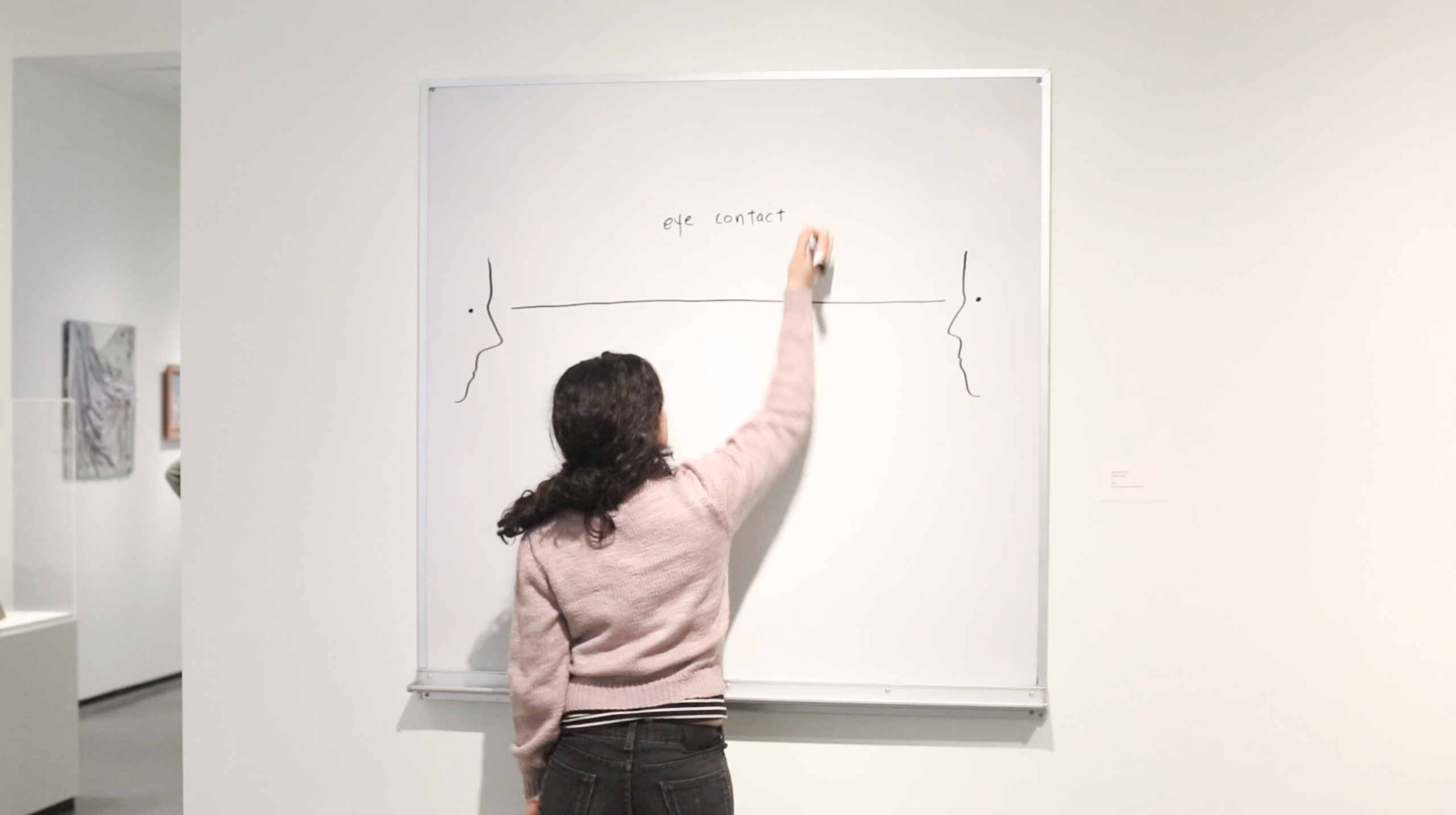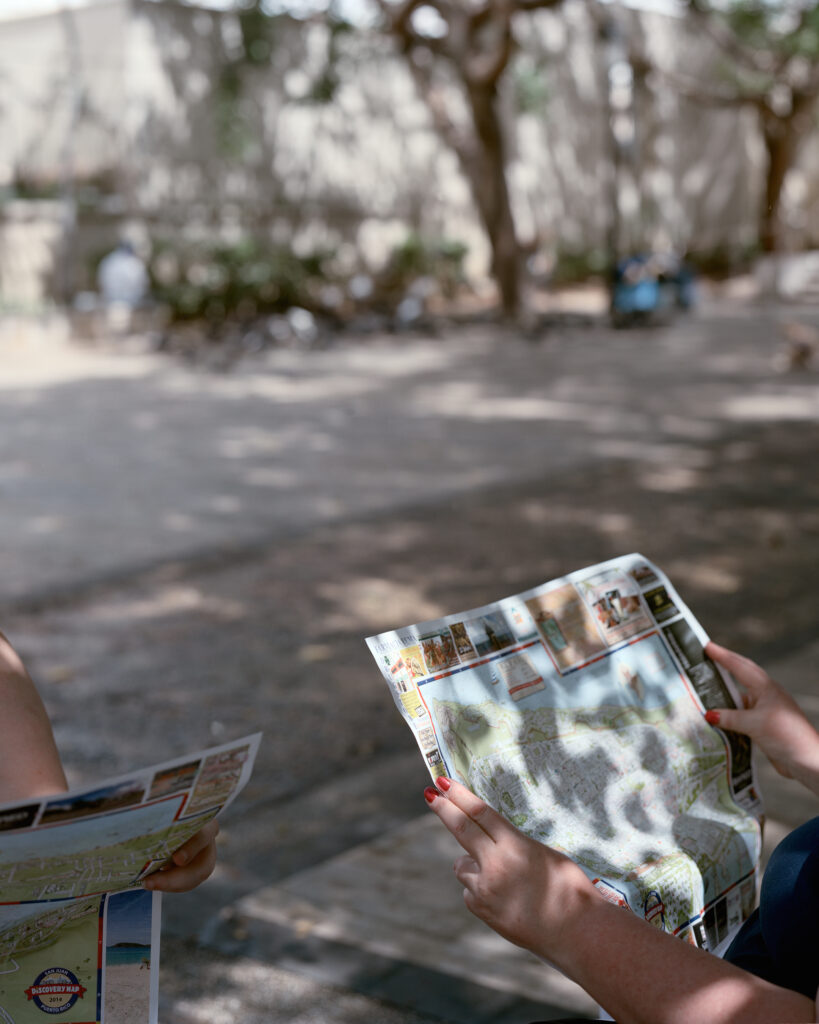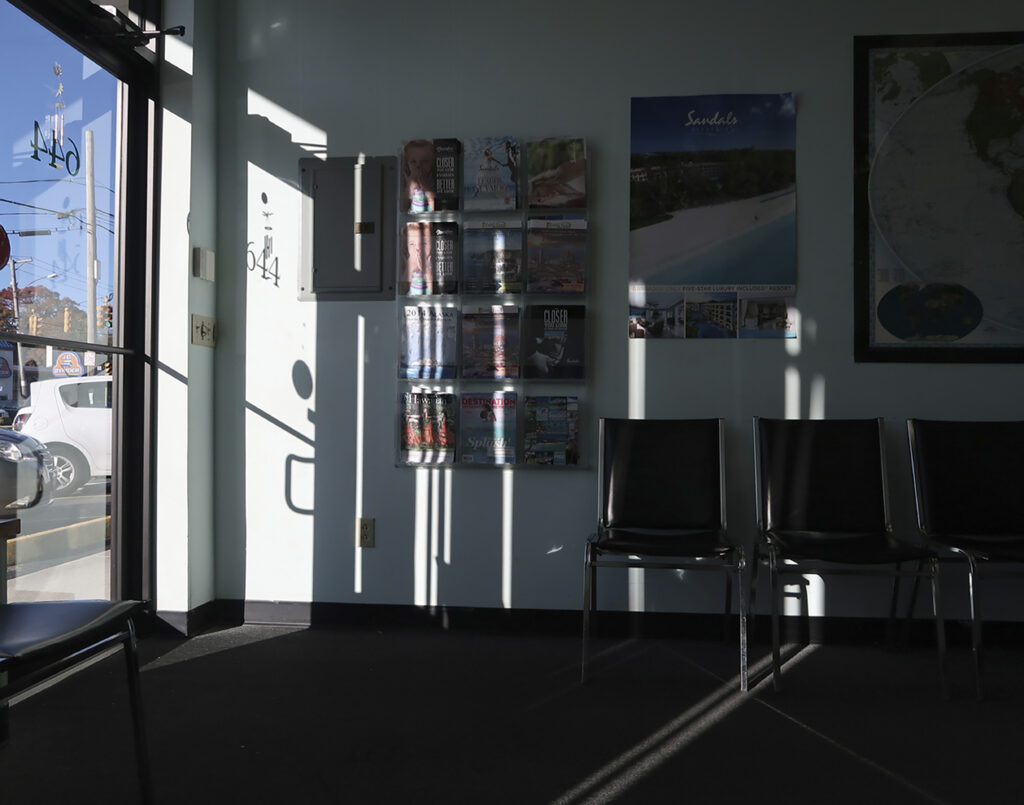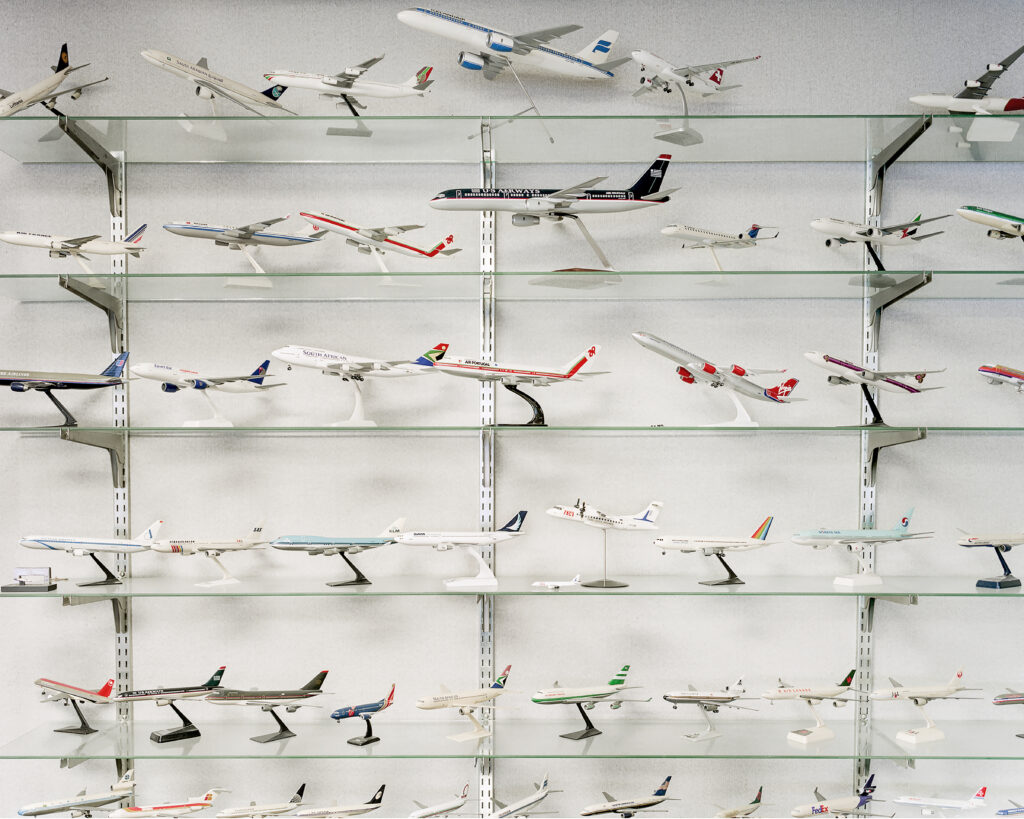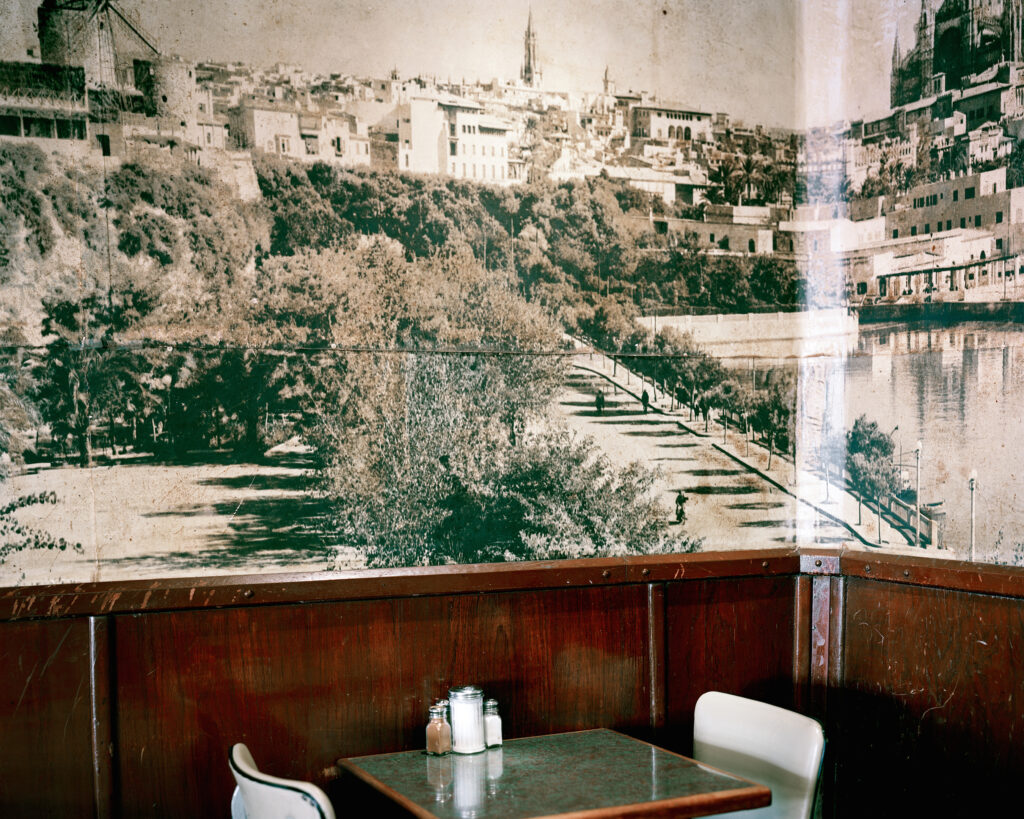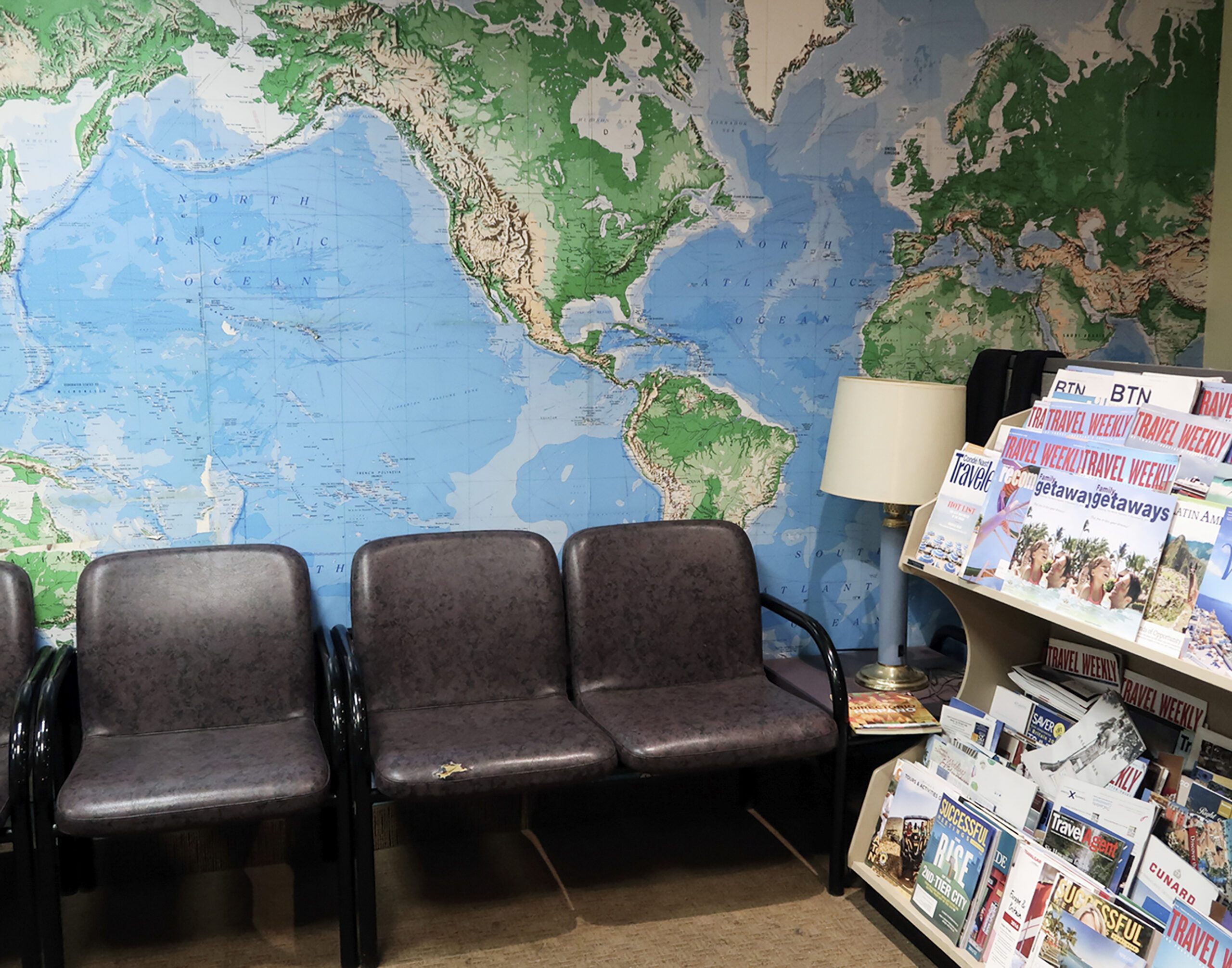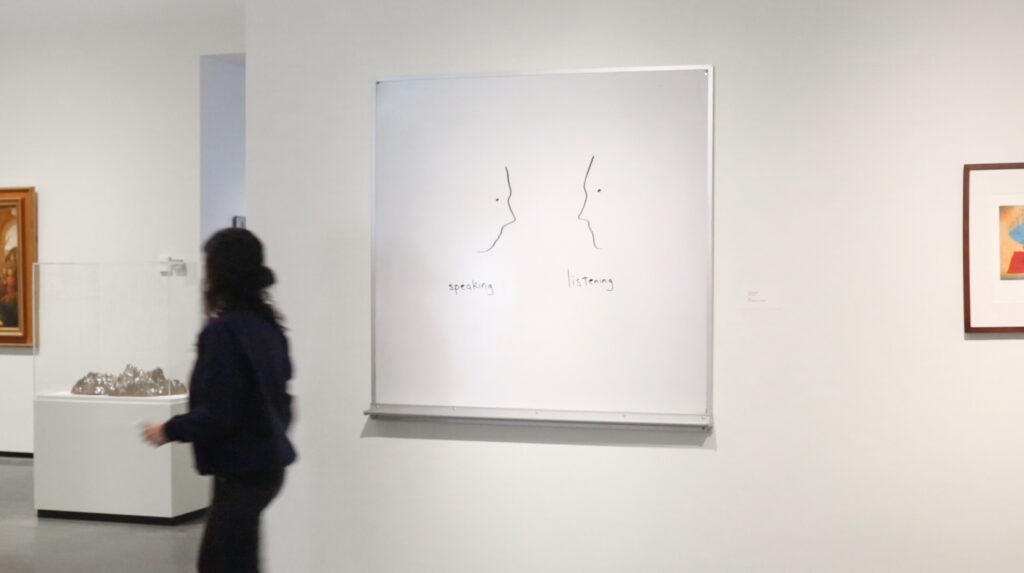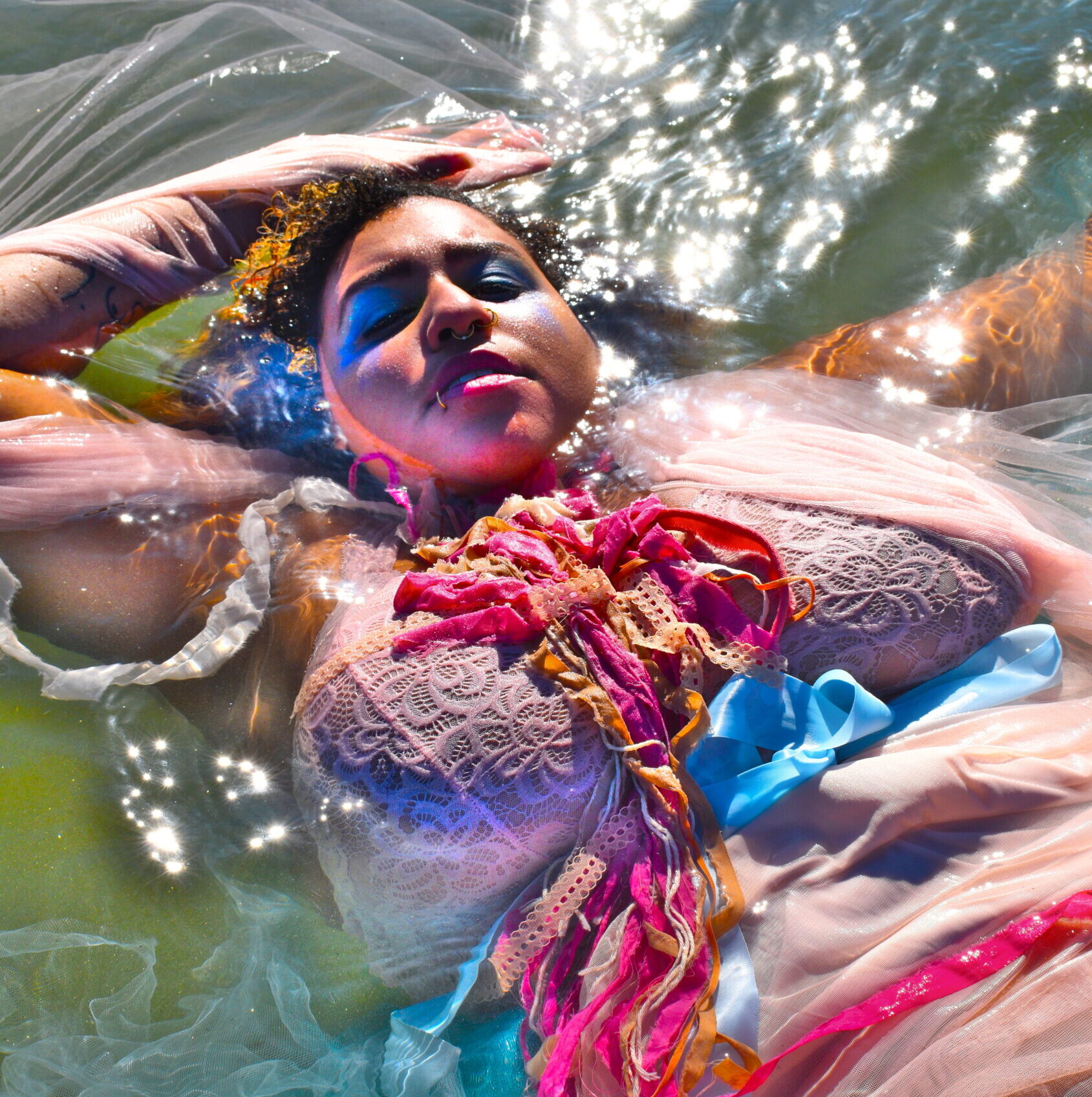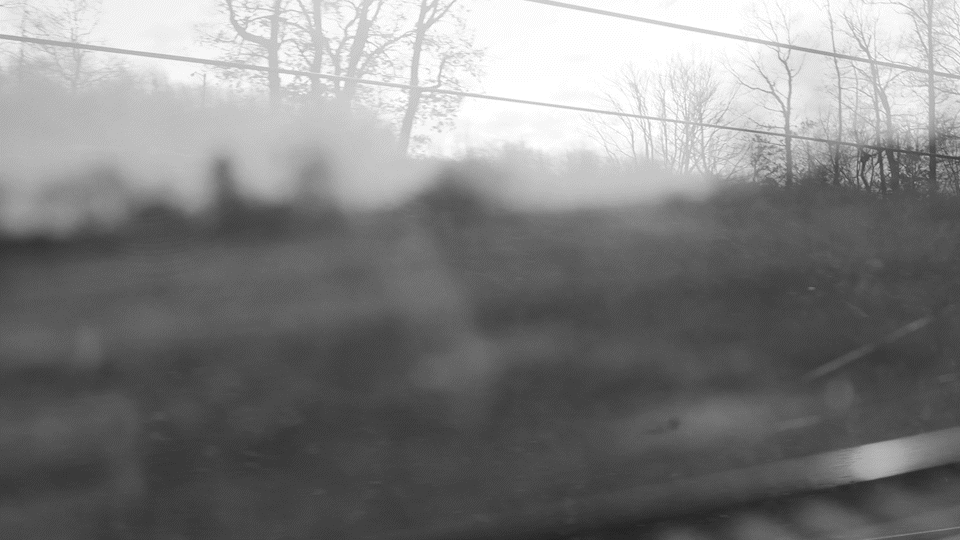About Ideal Abyss: “Travel agents sell the dream of a perfect destination and experience. They usher clients across borders for tourism, while political and economic inequalities make it impossible for many global subjects to move freely, even to their own homelands.”
About Non-Native Speaker: “This series of photographs, video and writing documents my time spent in the landscape of Old San Juan, Puerto Rico, a complex intercultural American colonial territory, as someone who learned Spanish as a foreign language. The project emanates from a desire to reflect on the terms of my own multilingualism and the ambivalent identity of the so-called “non-native” speaker.”
About 101: “In this series of live drawing performances, I return to the site of an installed whiteboard to draw a new communication or travel diagram every day of the exhibition.”
